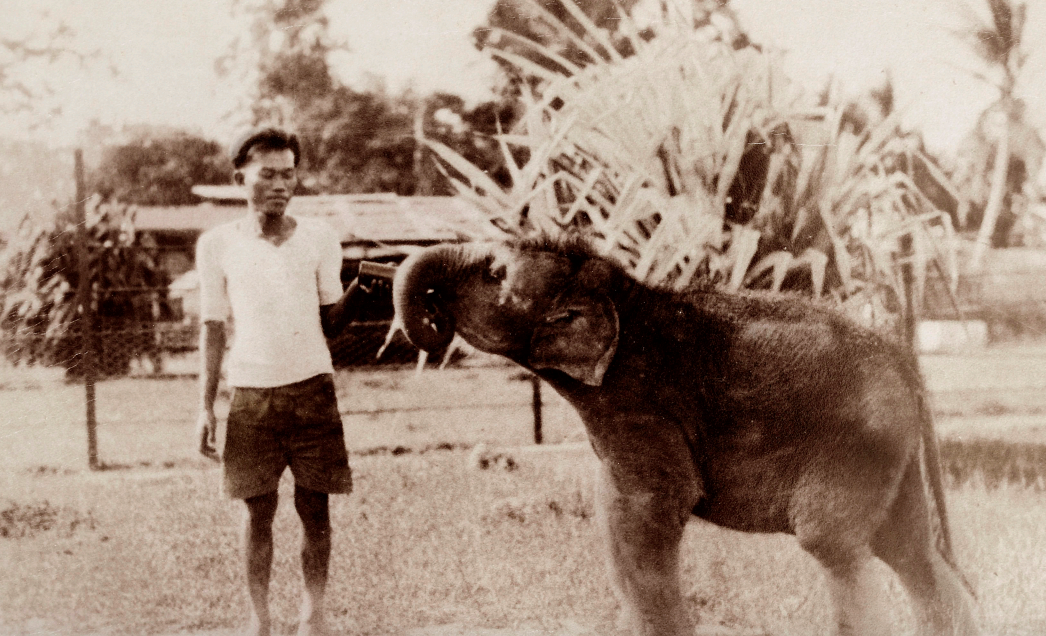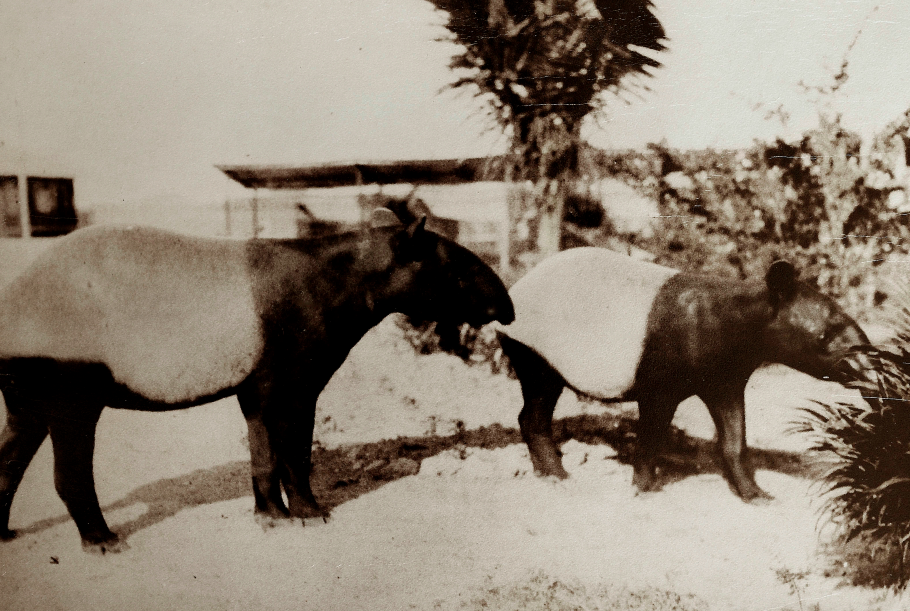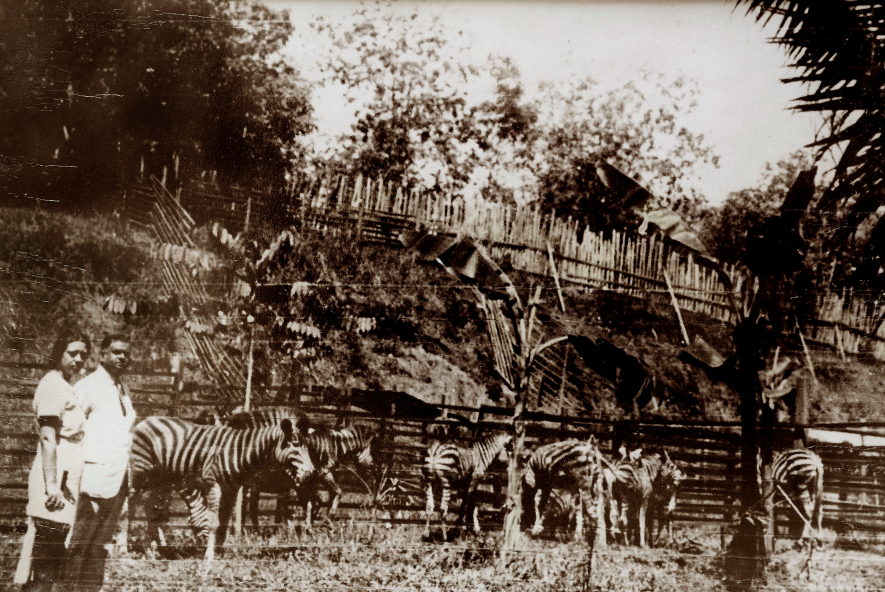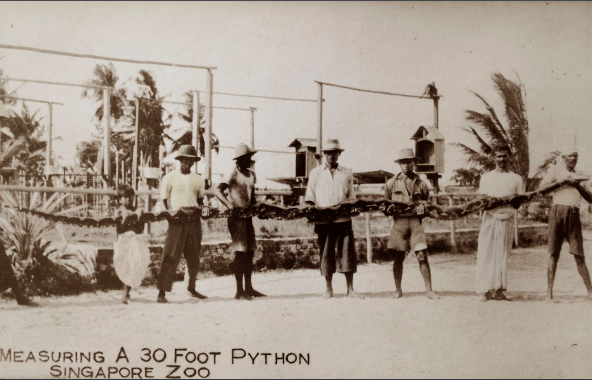Long before Punggol became the in place to get a Build-To-Order (BTO) flat, animals lived there - in a zoo.
Punggol Zoo, established in 1928 by pioneer William Lawrence Soma Basapa, was one of the earliest public zoos in Singapore. It was the “Singapore Zoo” in its heyday.*
[caption id="" align="aligncenter" width="202"] William Lawrence Soma Basapa. Photo from here[/caption]
William Lawrence Soma Basapa. Photo from here[/caption]
Known to his friends as an “Animal Man”, Basapa was a wealthy animal-loving estate owner. He collected exotic pets and was an animal trader of international renown.
Few would get on the wrong side of Basapa, as he was often accompanied by his pet Bengal tiger named “Apay”.
[caption id="" align="aligncenter" width="300"] Basapa with his pet tiger "Apay". Photo from here[/caption]
Basapa with his pet tiger "Apay". Photo from here[/caption]
In 1922, Basapa began amassing a collection of animals on his grand estate, which spanned an acre of lush ground at 549 Serangoon Road. He allowed visitors into his estate to view the animals. It was likely that Albert Einstein, who came to Singapore in 1922, was one of Basapa's visitors. In a likely reference to Basapa's estate, Einstein recorded in his memoirs that he visited "a wonderful zoological garden" in Singapore.
The animal collection and visitor numbers eventually outgrew the estate, and the noise and stench from the animals became unbearable for the Basapa family.
To continue growing his beloved collection of animals, Basapa bought 27-acres of land near the sea in Punggol in 1928 to build a zoo.
Over 200 animals and 2,000 birds were held at the zoo. Basapa would curate the displays and had animal exchange arrangements with overseas zoos. He also donated the carcasses of dead animals to the then Raffles Museum, which is today’s National Museum of Singapore. The carcasses included those of tigers, elephants, monkeys, and honey bears.
 Photo from here
Photo from here
Basapa’s Punggol zoo grew to become a major attraction throughout the 1930s and was visited by many locals and tourists, including Roland Braddell, a prominent lawyer in Singapore. Charlie Chaplin might have paid it a visit when he visited Singapore in 1932.
 Photo from here
Photo from here
Within the zoo, there were also amenities, such as a power-generator, workers’ quarters and a place where visitors could go to for refreshments.
Despite the impressive collection and the amenities in its day, the zoo was vastly different, from the present day Singapore Zoo in Mandai. In 1938, W. S. Ebden, the British chairman of the Singapore Rural Board, remarked that some animals were kept in cages that were too small, while other cages had a bad stench from them. Nonetheless, Basapa’s zoo continued running with its licence renewed by the Board.
 Photo from here
Photo from here
Tragic end
In 1942, the impending Japanese invasion of Singapore required the British army to take up defensive positions in northern Singapore, including Punggol. As the Japanese invasion drew near, the British army ordered Basapa to relocate his entire zoo from its premises within 24 hours. Unfortunately, Basapa failed to achieve the impossible feat, which led the British army to kill off his animals and release the birds. This brought an end to Basapa’s Punggol zoo.
During the Japanese Occupation from 1942 to 1945, the zoo was converted into a munitions store.
Basapa died during the Occupation in 1943.
*NUS Press contacted Mothership on 21 Nov to clarify that Basapa's Punggol zoo was not the first zoo in Singapore. The first zoo was at the Botanic Gardens from as early as 1875 and closed down in 1905. The article and its headline has been updated to reflect this.
Top photo from here
If you like what you read, follow us on Facebook and Twitter to get the latest updates.
If you like what you read, follow us on Facebook, Instagram, Twitter and Telegram to get the latest updates.
